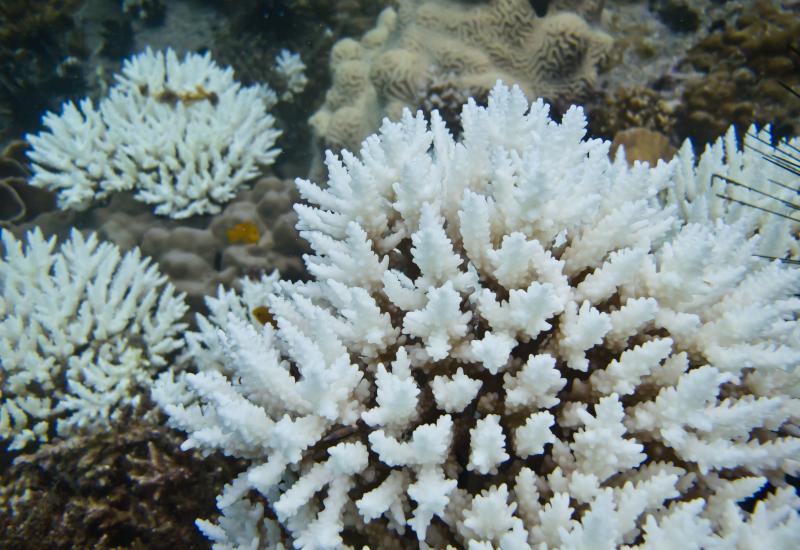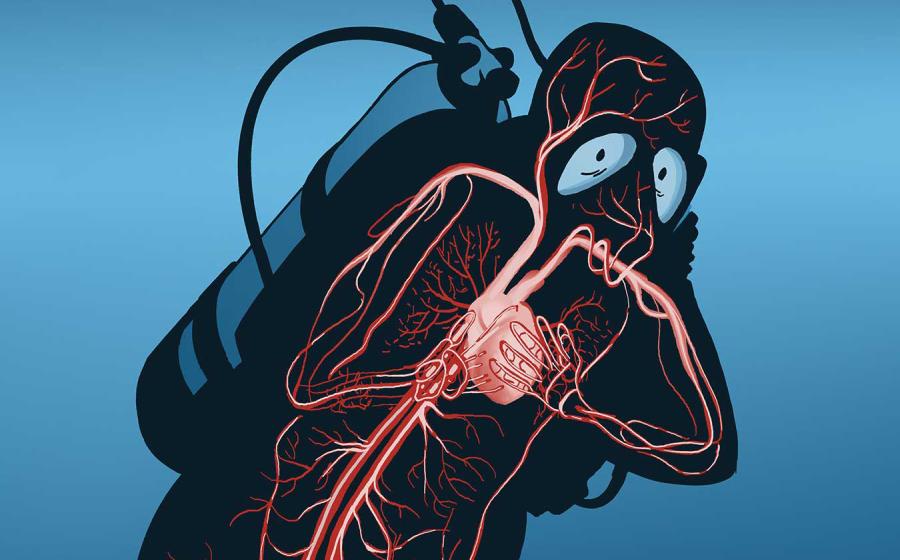Encounters: Gettin' Busy
Life’s fundamental goal for most creatures is singular: passing the torch to the next generation. Tensions can run high underwater when fish and corals get ready to release sperm and eggs into the big blue. While catching the actual act requires a great deal of luck and impeccable timing, it’s often fish foreplay — the aggregating — that’s the most fascinating for divers to observe. Follow our lead to five destinations where marine creatures reliably get together to get it on.
Life’s fundamental goal for most creatures is singular: passing the torch to the next generation. Tensions can run high underwater when fish and corals get ready to release sperm and eggs into the big blue. While catching the actual act requires a great deal of luck and impeccable timing, it’s often fish foreplay — the aggregating — that’s the most fascinating for divers to observe. Follow our lead to five destinations where marine creatures reliably get together to get it on.

Alex Mustard, Naturepl.com.
Coral Spawning, Bonaire Coral hardly need to aggregate on the reefs of Bonaire, where a near-solid fringing wall thick with staghorn, elkhorn and more sets the scene for a different kind of spawning encounter. “It’s a month or a month and a half full of activity, and it can happen anywhere around the island,” says Augusto Montbrun, dive operations manager for Buddy Dive, of the coral spawn. Look for polyps that look like tiny nuts emerging from the reefs’ abundant star corals for a clue that the spectacle is about to fire off, he says, adding, “The purple tube sponges go off like chimneys.” Brittle stars crawling atop the coral are another sign they’re about to blow, as the stars feed on the spawn. Like one big sex soup, the water turns milky when the coral spawn, and the sperm and eggs try to connect before getting washed away in the current.
When to Go Check the STINAPA website (stinapa.org) for the most current predictions for when each coral type is most likely to spawn in Bonaire. In general, spawnings occur in September and October in the days following the full moon.
Operator Buddy Dive (buddydive.com) fronts a house reef where the coral have been seen spawning, and it has an on-site dive center, boat- and shore-diving access and on-site lodging that ranges from hotel rooms to three-bedroom apartments.
Price Tag Buddy Dive’s Drive and Dive packages include seven nights’ accommodations, car rental, daily breakfast, airport transfers, six days of air fills and start from $915 per person (based on double occupancy in a hotel room).

Georgette Douwma, Getty Images.
Moorish Idols, Palau More than 40 aggregations have been documented in Palau, including orange spine unicornfish and bumphead parrotfish. The dive team at Sam’s Tours is digging deep into fish gatherings that occur at the corners of some of the renowned dive sites on the western barrier reef here, including Blue Corner and Saies Corner. The annual aggregation of moorish idols — an iconic Indo-Pacific fish — is one of the most wondrous to witness. Palau’s legendary blue water gets shot through with the lightening hues of up to 1,000 of the yellow- and black-striped fish when idols gather en masse as the moon builds toward full. Things really get exciting when the local reef sharks, giant trevally and other predators get frenzied with the thrill of the bonus food source.
When to Go Moorish-idol aggregations are observed between December and March, with January and February the peak months. The period when the half-moon is building toward full is the best chance to see them.
Operator Unique Diving expeditions, Sam’s Tours’ (samstours.com) new experience for advanced divers, offers trips to Palau’s spawning aggregations (also, red snapper, orange-spine unicornfish and bumphead parrotfish) for up to seven divers. Guides are a marine scientist and an experienced photographer.
Price Tag A day trip, which includes nitrox, weights and a box lunch, is $250. Weekly packages are available.

Doug Perrine, Seapics.com.
Cubera Snapper; Gladden Spit, Belize Sometimes aggregating fish are the attraction of a spawning event — other times it’s what they attract that beckons divers. In the case of spawning snapper in Belize’s Gladden Spit, it’s both. When mutton, cubera and dog snapper gather here to spawn, the water stews with a milky mix of sperm and eggs that’s a dinner bell for whale sharks — one of the biggest gatherings of the gentle giants in this part of the world — who lurk in wait, anticipating the predictable feast. Once divemasters spot the snapper, divers enter the water in groups and form a circle over the fish — exhaust bubbles, mimicking the appearance of spawn, also entice the whale sharks. This is one of the few places in the world where you can actually scuba-dive with whale sharks, but sometimes snorkeling at the surface, above divers’ bubbles, gives you the most up-close encounter. Snapper aggregations stay deep during the first few days of the full moon and move shallower as the moon wanes.
When to Go March through June, during the 10 days following the full moon, is your best chance to spot the whale sharks and aggregating snapper. April and May are considered prime time.
Operator Splash Dive Center (splashbelize.com) runs daily trips from Placencia aboard boats that accommodate a maximum of 12 divers, with slots of one-and-a-half hours at a time at the aggregating site.
Price Tag Dive trips to see the whale sharks cost $210 per person and include tanks, weights, lunch and parks fees, as well as a divemaster guide.

Dave Fleetham, Pacific Stock.
Hooded Nudibranchs, Washington For many divers, spotting a jewel-hued nudibranch on the reef elicits surprise and wonder. Now imagine seeing them amassed like underwater treasure in the eel grasses along Washington state’s nearshore, where hooded nudibranchs aggregate annually to deposit their ribbon-like eggs sacs. Good spots to find them include the public park on the east side of Samish Island facing Samish Bay and at March Point near Anacortes. Some of the cooler behaviors to look for include the Venus fly-trap-like opening of the animals’ oral hoods as they feed on plankton, their Spanish dancer-like swimming movements and a propensity to crawl upside down on the surface tension of quiet water (the latter makes for particularly wild double-image photos).
When to Go Late August to early October.
Operator Seattle-based underwater Sports (underwatersports.com) arranges trips and can also advise divers on shore-diving spots to see the nudibranchs.
Price Tag Two-tank dives cost $100 without gear and $175 with full gear.

Michael Patrick O'Neill, Oceanwideimages.com.
Goliath Grouper, Pompano, Florida They’re not called goliath for nothing — this famed fish easily tips the scales between 300 and 400 pounds. Coming upon a gathering of up to 50 aggregating grouper makes for quite a sight. Deeper offshore waters and the wrecks around Palm Beach County are prime spots to see them. “Goliath grouper are associated with structure throughout their life history,” says Angela Collins, a research scientist with the Florida Wildlife Conservation Commission who specializes in reef fish. “They’re opportunistic ambush predators; they like to be in the shadows.” The grouper aggregations usually last between four and six weeks. Look for telltale courtship displays such as the fish stacking atop each other, changing color patterns (their head sometimes goes blanched) and the males persistently nudging the vents of the females.
When to Go The grouper are present in South Florida waters year-round, but to see them in their greatest numbers, plan to dive between August and early October, with September considered the peak month.
Operator Brownie’s Dive & Paddle (bocadive.com) has 14- and 20-passenger boats that depart from Pompano for nearby sites and deeper offshore areas where grouper gather.
Price Tag Boat trips with two-tank dives and all gear cost $120 per person.










